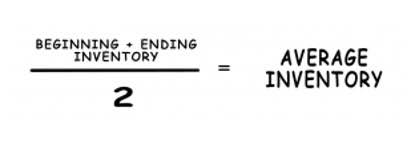
The term outstanding shares refers to a company’s stock currently held by all its shareholders. Outstanding shares include share blocks held by institutional investors and restricted shares owned by the company’s officers and insiders. To calculate earnings per share, you can use the MarketBeat EPS calculator.

About MarketBeat

Those instruments can be “in the money” if the exercise price — the price designated for the stock by the option or warrant — is below the stock’s trading price. The same is true for convertible debt, which allows holders to either be repaid in cash or convert the debt into equity at a pre-set per-share price. And if these instruments are in the money, they represent current ownership of the company, even if technically the shares underlying the options, warrants or debt haven’t yet been issued. Outstanding shares differ from treasury shares, which are the shares held by the company itself and which cannot be QuickBooks Accountant sold in the open market. Treasury shares plus outstanding shares together form the total number of issued shares.

The 10 Biggest Gold Mining Stocks
- Outstanding shares are vital because they can determine market capitalization.
- To calculate the weighted average of outstanding shares, multiply the number of outstanding shares per period by the proportion of the total time covered by each period.
- Common Stock (at par value), Additional Paid-in Capital, and Retained Earnings are typically shown as separate positive balances.
- The company hasn’t taken action yet; it’s just gotten approval to take action and sell some shares if it chooses to.
- The primary distinction between preferred and common stock is that common stock grants stockholders voting rights, while preferred stock does not.
While knowing how many shares you own is helpful, your company’s capitalization table (“cap table”) is critical when raising money and understanding exactly how equity is allocated. It is usually listed as a separate line item along with any other stock the company may have issued, such as preferred stock. On the balance sheet, the dollar value of common stock shows the par value of each share, which is the nominal or face value set by the company at the time the shares were issued. It can be seen as a sign of financial distress or a desperate attempt to prop up the share price. This negative perception can lead to a further decline in the share price.
- Publicly traded companies are required to file these reports with regulatory bodies such as the Securities and Exchange Commission (SEC).
- But the company, as in our example above and using the treasury stock method, has 5 million shares linked to options and warrants.
- Non-voting shares, also known as preferred shares, typically offer a fixed dividend payout and no voting rights in company matters.
- Adjustments for stock splits and dividends are necessary to refine the calculation.
- Assuming all option holders exercise, Company A would issue 10 million shares.
- You can find this number in a company’s financial statements, typically in the “Shareholder’s Equity” section of the balance sheet.
What Is Rolling EPS
Conversely, a reverse stock split reduces the number of outstanding shares. Companies typically use reverse splits to increase their share price to meet minimum exchange listing requirements. Although this decreases liquidity due to fewer https://whatthephovn.com/how-much-property-management-costs-a/ shares, it can deter short sellers by making it harder to borrow shares for short selling. When a company executes a stock split, the number of outstanding shares rises. Stock splits are often initiated to lower the share price, making it more accessible to retail investors and enhancing market liquidity. For example, in a 2-for-1 stock split, the share price is halved, but the outstanding shares double, improving affordability and attracting a broader investor base.
Factors Influencing Share Count
- This figure is important because it translates a company’s overall performance into per-share metrics, making an analysis much easier regarding a stock’s market price at a given time.
- A company may announce a stock split to increase the affordability of its shares and grow the number of investors.
- Once you’ve located a company’s balance sheet through the SEC or on the company’s website, look at the shareholders’ equity section, found near the bottom of the balance sheet.
- The sum of these weighted figures produces the total weighted average shares outstanding for the year.
- One possible point of confusion we still need to mention is stock given to employees as compensation, typically in some combination of restricted stock, options, or equity grants.
Each transaction has a specific accounting treatment how to calculate outstanding shares of common stock that reflects its impact on the company’s ownership structure. Market capitalization is calculated by multiplying the company’s share price by its shares outstanding. Shares outstanding are used to determine a company’s market capitalization, i.e. the total value of a company’s equity, or equity value. Authorized stock is the total number of stock or shares that a company is legally allowed to issue. It includes the shares owned by company management, shareholders and institutional investors such as hedge funds. Here’s what you need to know about the different share counts that publicly traded companies use, as well as how you can calculate the number of outstanding common shares.

Leave a Reply